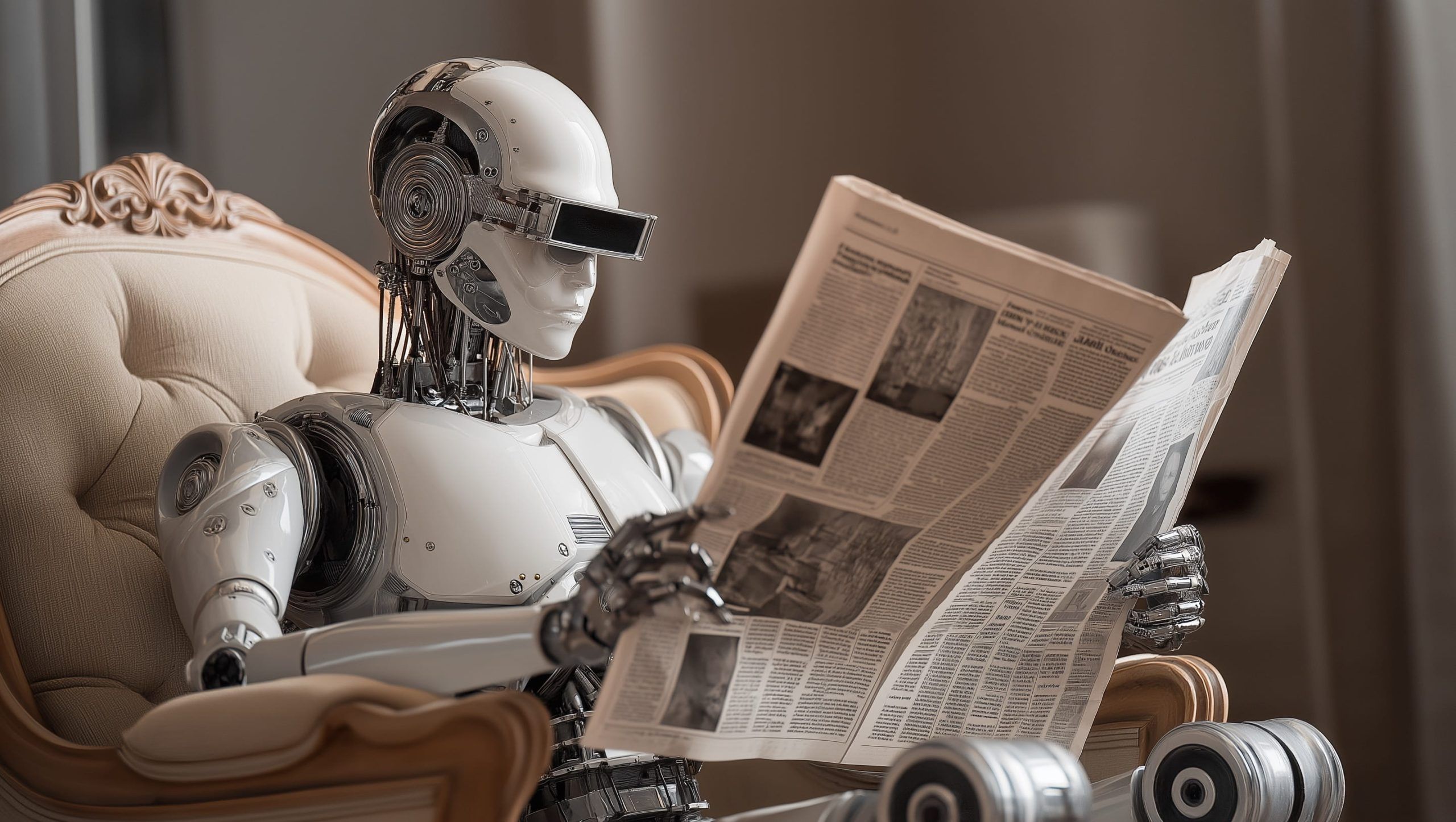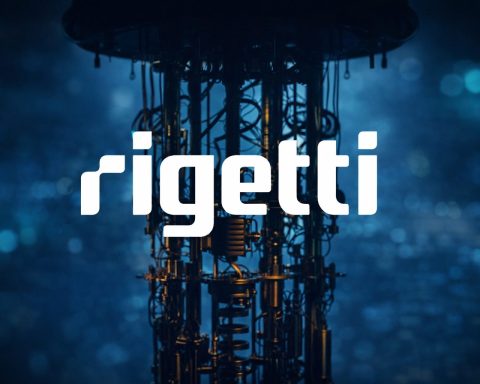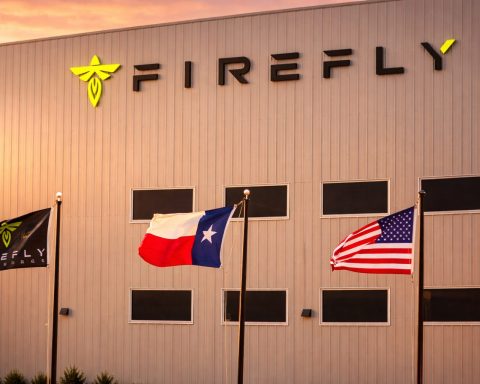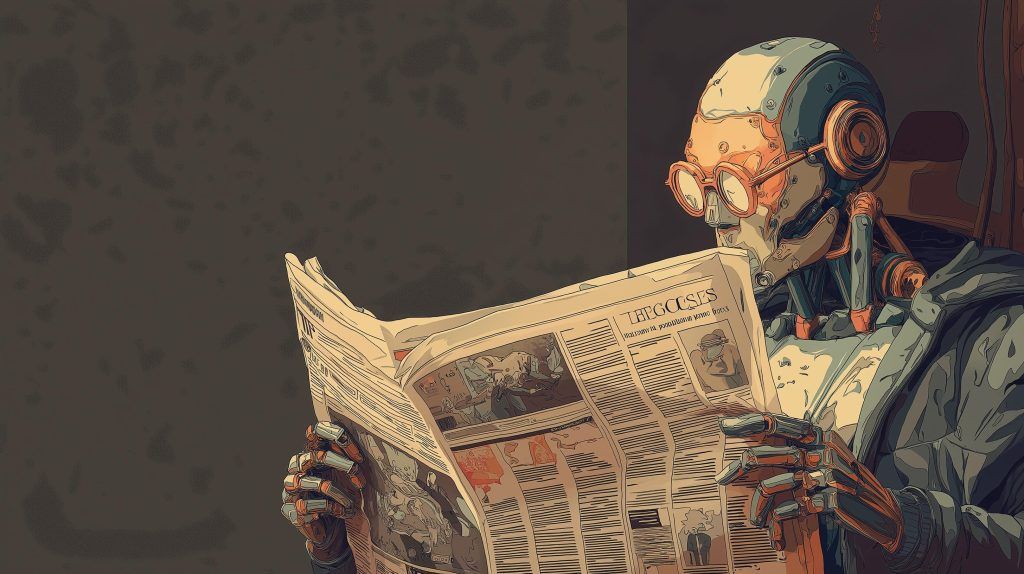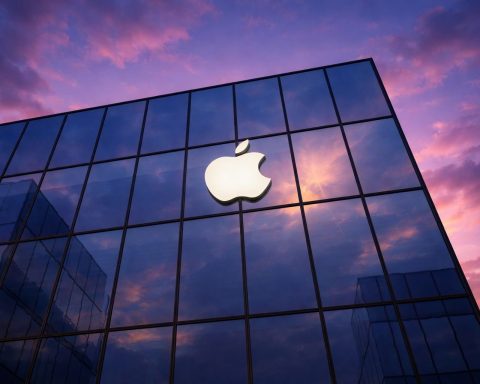- OpenAI’s Stargate Norway data center, built in Narvik with Norwegian partner Aker and infrastructure provider Nscale, will deploy 100,000 NVIDIA GPUs by 2026, start at 230 MW with plans to expand to 520 MW, run on 100% renewable hydropower, and operate under the OpenAI for Countries program to provide sovereign AI capacity.
- On July 29, OpenAI rolled out ChatGPT Study Mode, a Socratic-style tutor that guides learners step-by-step, is optional to toggle on/off mid-conversation, and, in early tests, refuses to directly write essays.
- Anthropic launched Claude for Financial Services, its first sector-specific AI assistant designed for banking, insurance, and investment use cases demanding high accuracy.
- Zhipu (Z.ai) released GLM-4.5, a 355B-parameter open-source language model optimized for building intelligent agents, on July 28, 2025, joining China’s pool of at least 1,509 large-language models as of July.
- Skild AI unveiled Skild Brain, a general-purpose robotics AI model announced July 29, 2025, designed to run on nearly any machine, trained on simulations and real-world demonstrations, with safety limits to cap force and demonstrated robots climbing stairs and picking up clutter; Skild had raised $300 million last year at a $1.5 billion valuation, and Alphabet has since acquired another robotics AI startup for over $1 billion.
- OpenAI’s revenue run-rate is reported at about $12 billion annually, according to The Information, roughly 20 months after ChatGPT’s public launch, driven mainly by Enterprise API access and developer apps.
- Palo Alto Networks agreed to acquire CyberArk for $25 billion in a cash-and-stock deal, its largest acquisition ever and one of the biggest tech takeovers of 2025, with CyberArk known for identity security and Palo Alto’s stock dropping about 8% on the news.
- Elon Musk filed a lawsuit against OpenAI alleging it abandoned its original nonprofit mission and shifted toward a for-profit model, echoing Musk’s creation of xAI and his long-running criticism of OpenAI.
- OpenAI and Google DeepMind announced human-level gold-medal performance on this year’s International Math Olympiad problems, with both teams solving 5 of 6 problems end-to-end in natural language.
- Google signed the EU’s voluntary AI Code of Practice to align with Europe’s forthcoming AI Act, while Microsoft is expected to sign and Meta declined; the code aims to promote safe tools but regulators warn it is not a substitute for binding rules.
Tech Giants Unveil Next-Gen AI Tools and Partnerships
OpenAI expanded its global footprint and product lineup this week. OpenAI launched “Stargate Norway,” its first AI data center project in Europe, in partnership with Norwegian firm Aker and infrastructure provider Nscale [1] [2]. The Narvik-based facility will deliver 100,000 NVIDIA GPUs by 2026 and run on 100% renewable hydropower [3] [4] – one of Europe’s most ambitious AI infrastructure investments to date. OpenAI said the 230 MW data center (with plans to expand to 520 MW) is part of its strategy to bring “sovereign AI” capacity to allied countries under the OpenAI for Countries program [5] [6]. (It follows a similar Stargate UAE project earlier this year.) The Norway venture will ensure local startups and researchers get priority access to AI compute, while surplus capacity will serve wider Northern Europe [7] [8]. OpenAI’s CEO Sam Altman, visiting Norway, touted the project as aligning with Norway’s digital goals and noted the region’s cool climate and abundant green energy make it “an ideal location” for AI mega-computers [9] [10].
Meanwhile OpenAI is also refining its flagship product. On July 29, it rolled out a new “Study Mode” for ChatGPT, turning the popular chatbot into an AI personal tutor that guides learners step-by-step instead of just giving answers [11] [12]. This mode uses Socratic-style questioning and hints to promote critical thinking. “One in three college-aged people use ChatGPT… The top use case is learning,” noted OpenAI’s VP of Education, who said Study Mode aims to discourage cheating by walking students through problems rather than simply solving them [13] [14]. Early tests show the tutor-mode chatbot refusing to outright write an essay or answer (“I’m not going to write it for you but we can do it together!”) and instead coaching the student on how to approach it [15]. Educators have given cautious praise, calling it “a positive step toward effective AI use for learning.” The feature is optional and can be toggled on/off mid-conversation [16], so users can still get direct answers when needed.
Several new AI models and services were also introduced across the industry. Anthropic, a leading OpenAI rival, launched “Claude for Financial Services,” its first sector-specific AI assistant tailored for banking, insurance and investment use cases [17]. The company says this finserv-focused Claude is designed for high-stakes tasks like portfolio analysis and underwriting, where accuracy is paramount [18] [19]. “Where we saw a lot of traction early on was with these high-trust industries,” Anthropic’s finance head explained, noting many enterprise CFOs remain wary of AI errors [20] [21]. The move reflects a broader trend toward domain-specific AI trained for particular industries. In Asia, Chinese AI firm Zhipu (Z.ai) – one of China’s so-called “AI tigers” – open-sourced its new GLM-4.5 language model, touting advanced reasoning and coding abilities on par with Western models [22] [23]. Zhipu’s 355B-parameter model is optimized for building intelligent agents, and its release on July 28 adds to a wave of Chinese open-source AI as the country races to compete in generative AI. (China has already released 1,509 large-language models as of July, leading the world in sheer volume [24].)
Even the realm of physical robots saw a breakthrough. Skild AI – a two-year-old robotics startup backed by Amazon’s Jeff Bezos and Japan’s SoftBank – unveiled a general-purpose “Skild Brain” AI model for robots on July 29 [25]. This foundational model is designed to run on nearly any machine, from factory arms to humanoid helpers, enabling robots to “think, navigate and respond more like humans,” the company said [26] [27]. Demo videos showed Skild-powered robots climbing stairs, regaining balance after a shove, and picking up clutter – feats requiring human-like spatial reasoning and adaptability [28]. The model was trained on simulations and human demonstration videos, then continually fine-tuned with real-world data from each robot using it [29] [30]. “Unlike language or vision, there is no [Internet] data for robotics… you cannot just apply generative AI techniques,” noted CEO Deepak Pathak, explaining that Skild Brain creates a shared learning loop where every deployed robot feeds data back to improve the whole network [31] [32]. Importantly, Skild built in safety limits – the AI caps the force robots can exert to prevent accidents [33] [34]. The “shared brain” concept and safety focus underscore the industry’s push to make robots smarter without making them dangerous. Analysts say Skild’s launch reflects a larger race to develop versatile, AI-driven robots that can perform diverse tasks; big tech and investors are pouring money into this space. (Skild itself raised $300 million last year at a $1.5 billion valuation [35], and Alphabet recently acquired another robotics AI startup for over $1 billion.) The coming months will show if generalist robot brains can live up to the hype – potentially transforming logistics, manufacturing and healthcare – or if physical-world AI will lag behind its virtual cousins.
Big Money Moves and Power Plays in AI
Behind the product news is a frenzy of funding and deal-making as companies jockey for AI dominance. OpenAI & Microsoft’s alliance is at a pivotal juncture: Reuters revealed that Microsoft is in advanced talks to revise its OpenAI partnership so it retains access to OpenAI’s crown-jewel technology long-term [36] [37]. Under the existing contract, Microsoft could lose some rights if OpenAI ever achieves “artificial general intelligence” (AGI) – a clause now seen as a real possibility and a sticking point [38]. Microsoft wants to remove the AGI cutoff and ensure it can use OpenAI’s latest models even if they hit a breakthrough beyond human-level intelligence [39] [40]. Negotiators from both companies have been meeting regularly and could strike a new deal within weeks [41] [42]. These talks are intertwined with OpenAI’s expected $40 billion funding round led by Japan’s SoftBank. OpenAI is planning to restructure into a public-benefit corporation, a move that requires Microsoft’s sign-off and is crucial for the SoftBank-led investment [43]. In fact, SoftBank has reportedly conditioned $20 billion of its $40 billion investment on OpenAI completing that corporate overhaul by year’s end [44]. The stakes are enormous for Microsoft – it has poured billions into OpenAI and seen Azure cloud revenue surge ~39% on the back of ChatGPT’s popularity [45] [46]. As one analyst put it, Microsoft likely holds the upper hand and “will end up negotiating terms in the interest of its shareholders” [47] [48]. But competitors are circling: OpenAI has quietly added Google Cloud as a supplier and massively expanded an Oracle Cloud deal (planning 4.5 GW of new data centers to support OpenAI) [49]. In short, the AI arms race isn’t just about algorithms – it’s also about locking in the cloud infrastructure and partnerships to train and deploy those algorithms at world scale.
OpenAI isn’t the only AI lab attracting sky-high valuations. Anthropic, maker of the Claude chatbot and seen as a key rival to OpenAI, is reportedly fielding investment offers that would value it north of $100 billion – eclipsing the valuation of most publicly traded tech firms [50] [51]. According to a Bloomberg scoop, venture investors have approached Anthropic with pre-emptive funding proposals at that ~$100B level, even though the startup isn’t formally fundraising yet [52] [53]. (For context, Anthropic was valued at $61.5 billion just earlier this year after a big round [54].) The renewed interest comes amid a revenue surge – Anthropic’s annualized revenue from Claude jumped from about $3 billion to $4 billion in the past month alone [55]. Its backers include Amazon and Google, and indeed Amazon – which invested $8 billion in Anthropic in 2023 – is rumored to be considering a multi-billion follow-on to avoid diluting its stake [56]. The frenzy around Anthropic underscores how hot the elite AI startups have become. Investors are betting that a few foundation-model providers (OpenAI, Anthropic, etc.) could dominate the next decade of AI – and they’re willing to pony up record sums for a piece of those potential winners.
Major M&A moves also grabbed headlines. In cybersecurity – an industry now touting its AI angles – Palo Alto Networks agreed to buy Israeli cyber firm CyberArk for $25 billion in a cash-and-stock deal [57]. It’s Palo Alto’s largest acquisition ever and one of the biggest tech takeovers of 2025, aimed at creating a comprehensive security platform amid rising AI-driven threats to corporate networks [58] [59]. CyberArk is a leader in identity security (protecting accounts and credentials), which has become a focal point as AI-powered attacks increase. “The rise of AI and the explosion of machine identities have made it clear that identity protection is vital,” Palo Alto’s CEO Nikesh Arora said. The deal follows Alphabet/Google’s $32 billion acquisition of security startup Wiz in March, signaling a consolidation wave as customers demand all-in-one defenses [60]. Notably, Palo Alto’s stock fell ~8% on news of the acquisition, reflecting investor nerves about integrating such a large purchase [61]. But analysts note that companies are feeling pressured to scale up capabilities fast – even via mega-deals – because AI is supercharging both sides of the cyber equation (attackers and defenders).
In other financial markers: OpenAI’s revenue boom continues unabated. The startup has reached an estimated $12 billion annual revenue run-rate, according to The Information – an astonishing number for a company that only launched ChatGPT to the public 20 months ago [62]. For comparison, that would put OpenAI’s sales on par with a Fortune 500 company. Much of this comes from enterprises paying for ChatGPT API access and developers building apps on top of OpenAI’s models. The figure, if accurate, helps justify the huge investments OpenAI is courting (and perhaps explains why Microsoft is so keen to extend its rights). Separately, in the AI startup world, there’s still intense appetite for funding: fintech firm Ramp (which uses AI to automate corporate finances) just raised $500 million at a $22.5 billion valuation, only weeks after a prior raise – illustrating how companies are leaning into AI narratives to attract capital [63]. On the flip side, one high-profile “AI builder” startup in Europe collapsed into bankruptcy this week, a reminder that not every AI play will succeed despite the hype [64].
Regulators Pump the Brakes on AI
Government authorities across continents used these days to flex regulatory muscle and set new AI guardrails. In Europe, Meta came under legal fire: Italy’s antitrust watchdog launched an investigation into Meta over its new AI assistant in WhatsApp, on suspicion of monopoly abuse [65]. The Italian authority (AGCM) alleges Meta pre-installed its “Meta AI” chatbot in WhatsApp without user consent, potentially giving Meta’s own AI an unfair advantage and locking users into its ecosystem [66] [67]. Since March, WhatsApp’s interface has included the Meta AI assistant in the app’s search bar, offering chatbot-style answers and help within chats [68]. Regulators argue this bundling could “unfairly steer [WhatsApp’s] user base” toward Meta’s AI services “not through merit-based competition, but by forcing availability” of the in-house tool [69]. If proven, that might violate EU competition rules by crowding out rival AI assistants that don’t enjoy the same default access to WhatsApp’s billions of users [70] [71]. Meta says it is cooperating with authorities and claims the free AI service “benefits millions of Italians” by giving them an easy way to use AI in an app they trust [72] [73]. This is one of the first major antitrust cases globally targeting the integration of generative AI into a dominant platform. Observers note it foreshadows broader EU enforcement once the bloc’s AI Act comes into force – a sign that Big Tech’s AI tie-ins will face heavy scrutiny in Europe.
Over in Brussels, the EU won a cautious concession from Google. Alphabet’s Google announced it will sign on to the EU’s new voluntary “AI Code of Practice,” a set of guidelines meant to help companies comply early with Europe’s upcoming AI Act regulations [74] [75]. “We hope this code… will promote Europeans’ access to secure, first-rate AI tools,” wrote Google’s global affairs chief Kent Walker on July 30 [76] [77]. However, Walker’s blog post also voiced serious reservations. Google is concerned that some provisions in the EU’s draft AI Act – mirrored in the code – could “slow Europe’s development and deployment of AI” via excessive red tape [78] [79]. In particular, Google objects to requirements that AI firms reveal their training data sources (a nod to copyright transparency) and undergo potentially lengthy approval processes for new models [80] [81]. Such rules, Google argues, might expose trade secrets and hinder innovation without strong evidence of benefit. Despite its qualms, Google’s agreement to sign the code is seen as a strategic move: by engaging with EU regulators now, it can lobby from within to shape final rules. Microsoft has similarly indicated it will likely sign the code (per its President Brad Smith), while Meta pointedly declined, citing legal uncertainty for open-source model developers under the EU’s approach [82] [83]. The voluntary code is an appetizer to the main course of the EU AI Act – a sweeping law still being finalized that would impose some of the world’s strictest AI requirements. The tension on display – U.S. tech giants publicly supporting AI safety and transparency, yet warning against overregulation – highlights the delicate dance as Europe tries to rein in AI risks without stifling innovation. As one EU official put it, getting industry buy-in on the code is “a good step, but not a substitute for binding rules.”
In Washington, the White House rolled out a major blueprint for U.S. AI leadership. President Trump’s administration (now about six months into its term) released a 28-page “National AI Action Plan” and spent the week of July 29 touting its vision to keep America ahead in AI [84]. The plan outlines 90+ actions across three pillars – Accelerating Innovation, Building AI Infrastructure, and International AI Security [85]. Key proposals include:
- Slashing regulatory hurdles to speed AI deployment in healthcare, transportation, and other sectors (e.g. fast-tracking FDA approvals for AI-driven medical devices) [86].
- Investing billions in domestic chipmaking and cloud: The government aims to fund new semiconductor fabs and “AI Gigafactories” (massive data centers) on U.S. soil [87]. One goal is to alleviate the GPU shortage that has hampered AI model training.
- Establishing AI sandboxes and test beds: The plan calls for safe environments where companies can test AI systems with relaxed rules, to innovate without fear of immediate liability [88].
- Training an AI workforce: Scholarships, visas for AI talent, and new STEM education initiatives are proposed to address the talent shortage [89].
- Tightening export controls on AI tech: In a nod to geopolitics, the U.S. will continue denying advanced AI chips to adversaries like China and explore new ways to verify chips aren’t diverted to banned countries [90] [91]. (Notably, the plan recommends requiring location-tracking mechanisms on high-end AI chips – an idea applauded by bipartisan lawmakers pushing the CHIP Security Act [92] [93].)
- Fast-tracking AI infrastructure permits: Trump signed an executive order to streamline environmental and zoning reviews for AI data centers, treating them as strategic assets [94]. Another order boosts AI exports to U.S. allies and bans federal agencies from buying AI systems deemed “politically biased” [95].
On the thorny issue of intellectual property, the administration sided with tech companies: Trump declared that forcing AI firms to pay for every piece of copyrighted data used in training is “not do-able,” suggesting such questions be left to the courts [96] [97]. This stance relieved AI developers who scrape the open web for training data, as it rejects aggressive new copyright fees. The plan’s rollout drew mixed reactions. Tech industry groups and venture investors cheered the pro-innovation, light-touch approach – a Washington Post editorial even called it a “good start” toward U.S. AI dominance, praising the focus on growth over new red tape. But consumer advocates and privacy groups sounded alarms: by rolling back Obama-era guidelines on AI bias and misinformation and supercharging AI projects with minimal oversight, is the government ignoring risks to civil liberties? [98] [99] Some warn this “beat China at all costs” posture could trigger an AI arms race that lacks adequate ethical safeguards [100]. The Trump administration, for its part, frames the plan as striking the right balance – unleashing American innovation while pursuing “trustworthy AI” via voluntary standards and international diplomacy. Regardless of the debate, the U.S. has sent a clear message: it intends to win the global AI race, and fast. How to do so responsibly will remain a point of contention, likely to surface in upcoming Congressional hearings.
On the global stage, China and the U.S. continued their tech sparring. In a striking development July 31, China’s Cyberspace Administration summoned NVIDIA to answer questions about its new H20 AI chips [101]. The Chinese regulator demanded Nvidia explain whether the export-version chips (designed for China after U.S. export bans on more advanced GPUs) have any hidden backdoors or tracking features that could pose security risks [102] [103]. This came just days after U.S. lawmakers urged that advanced chips sold abroad include “tracking and positioning” to enforce export controls [104] [105]. Beijing’s concern is that if U.S.-made AI chips secretly phone home or limit performance, it could compromise Chinese users’ data and AI projects [106]. Nvidia, which reportedly sold a large batch of H20 chips to China after Washington partially lifted a ban this month [107] [108], did not comment on the meeting. The episode highlights the trust deficit in US–China tech relations: the U.S. wants to restrict China’s AI capabilities (through chip bans and now possibly location locks), and China in turn fears the allowed chips might be poisoned chalices with built-in U.S. oversight. It’s a high-stakes tug-of-war over the core hardware of AI. As one analyst noted, we’re watching a new kind of tech geopolitics where “GPUs are the new oil” – strategic resources tightly controlled by governments. Expect China to accelerate its own AI chip development to reduce reliance on Nvidia, and the U.S. to double-down on keeping cutting-edge silicon out of Chinese hands.
Breakthroughs, Benchmarks, and Rivalries in Research
Amid the corporate and political noise, AI research notched a milestone that just a year ago seemed out of reach. Both OpenAI and Google DeepMind announced that their AI models achieved human-level “gold medal” performance on this year’s International Math Olympiad (IMO) problems [109]. For the first time, AI systems essentially tied the world’s top teenage mathletes in one of the most challenging problem-solving competitions on the planet [110]. According to the companies, each of their cutting-edge models solved 5 out of 6 Olympiad problems correctly, which typically earns a gold medal (awarded to roughly the top 8–10% of human contestants) [111] [112]. This result is stunning because last year no AI came close without heavy human assistance. Unlike 2024’s attempts – which involved special theorem-proving programs and humans translating problems into code – this time both OpenAI and DeepMind let their models tackle the Olympiad end-to-end in natural language [113]. The AI read each question (written in plain English) and generated full proofs as answers, just as a student would, entirely on its own [114] [115]. DeepMind’s approach, internally dubbed “Deep Think” and based on its upcoming Gemini model, was even reviewed by official IMO judges under an agreement to ensure the evaluation was rigorous and fair [116] [117]. “For a long time, I didn’t think we could go that far with LLMs,” admitted DeepMind researcher Thang Luong, highlighting that their new model can juggle multiple chains of reasoning in parallel – a key capability for solving hard problems [118] [119].
The achievement set off a dramatic rivalry between the AI labs. OpenAI publicly announced its IMO feat on Saturday, July 19, beating DeepMind to the punch – and DeepMind was not pleased. Within hours, DeepMind’s CEO Demis Hassabis and his team took to Twitter to slam OpenAI for announcing results “prematurely,” before independent experts could verify them and before the student winners had their moment in the spotlight [120] [121]. “We didn’t announce on Friday because we respected the IMO Board’s request that all AI labs share results only after the official results… & the students had rightly received the acclamation they deserved,” Hassabis tweeted pointedly [122] [123]. He implied OpenAI broke a gentlemen’s agreement, accusing the rival of chasing headlines at the expense of sportsmanship. The spat grew snippy enough that TechCrunch wryly remarked, “if you’re going to enter AI in a high school contest, you might as well argue like high schoolers.” [124] OpenAI’s researchers, for their part, defended their timing and said they were proud of the result regardless. Lost in the social media drama was just how impressive the math milestone truly is. Even some outspoken skeptics of AI hype were floored. Longtime critic Gary Marcus said the dual AI triumph was “awfully impressive,” noting that “to be able to solve math problems at the level of the top ~67 high school students in the world is to have really good math problem-solving chops.” [125] [126] In other words, AIs just matched the world’s brightest teens in a domain requiring not only knowledge but original creative reasoning – a feat few thought possible so soon. Whether these Olympiad-solving skills translate to real-world problem-solving outside contest math remains an open question, but it’s a powerful proof-of-concept that advanced AI can tackle truly complex intellectual challenges. The incident also underscores a broader theme: AI milestones are increasingly PR battles as much as technical ones. Achievements in research now prompt victory laps (or subtweets) on social media, as each lab angles to claim leadership in the fast-moving AI race. As one commentator joked, “AGI might emerge one day – and immediately argue with itself on Twitter.”
Beyond the math duel, there were other notable research highlights. In the life sciences, DeepMind’s AlphaFold – the system that solved protein folding in 2020 – is now spawning real-world applications in drug discovery. Nature reported this week that pharmaceutical researchers are using AlphaFold’s protein-structure predictions to design new medicines and vaccines faster than ever [127]. Meanwhile, a new AI-powered genomics tool can read DNA sequences with unprecedented precision, potentially flagging rare mutations that human experts miss [128]. These advances hint at medical breakthroughs on the horizon (cures for certain diseases, personalized gene therapies), thanks to AI’s ability to find patterns in biological data. However, in the cybersecurity realm, researchers at NC State demonstrated a double-edged sword: they developed a novel adversarial attack that can fool computer vision systems by subtly altering input data (like tweaking a few pixels or printing a patterned overlay) [129]. Even as AI vision gets smarter, this exploit showed that security blind spots remain, since an image can be manipulated in ways a human wouldn’t notice but that completely throw off an AI’s recognition. The finding is a reminder that each new AI capability often comes with new vulnerabilities – and addressing those will be an ongoing challenge for the field.
AI Ethics, Creative Labor, and Public Reactions
As AI surges ahead, ethical debates and creative pushback are intensifying. In the entertainment world, voice actors and dubbing artists in Europe are raising alarms about AI tools that can clone voices and automate dubbing. On July 30, Reuters profiled the fight of actors like Boris Rehlinger – the French voice of Hollywood stars like Ben Affleck and Joaquin Phoenix – who feel “threatened even though my voice hasn’t been replaced by AI yet.” [130] [131] Rehlinger is part of the French campaign “Touche Pas Ma VF” (“Don’t Touch My Voice-Over”), one of several initiatives in France and Germany calling for regulations on AI in dubbing [132]. These performers argue that dubbing a film is an art form requiring a whole team – actors, translators, dialogue coaches, sound engineers – to convey emotion and nuance in another language [133]. They worry that “soulless” AI-generated voices, while improving fast, will never match a human’s performance. Yet studios and startups are already experimenting with AI dubbing to localize content into dozens of languages quickly. Some AI firms insist the tech will assist rather than replace humans – for example, generating a rough dub that a voice actor can then refine, supposedly making the process more efficient [134]. But many in the industry aren’t convinced. Voice actors’ associations across Europe are lobbying EU lawmakers to mandate explicit consent and fair compensation if an actor’s voice is used to train or generate AI voices, plus clear labeling of AI-dubbed content [135] [136]. They point to cautionary tales: earlier this year a streaming platform released an AI-dubbed series in German that was so monotonous and error-ridden, viewers revolted and it was pulled from circulation [137]. Even so, surveys suggest younger viewers are often indifferent – nearly half said their opinion of a show wouldn’t change if they learned the voices were AI-generated [138]. This underscores a cultural split: artists see AI as a threat to their livelihoods and creative quality, while some audiences (and studio execs) see it as just another technology. The voice actors’ battle mirrors the broader Hollywood struggle – recall that the ongoing actors’ strike in the U.S. (SAG-AFTRA) is also demanding limits on AI simulations of actors’ voices and likenesses. As one dubbing veteran warned, without strong rules “we risk losing an art form – and jobs – to a cheap imitation.” [139] The public is increasingly aware of these issues; social media is rife with discussions on deepfake voiceovers and the future of human creativity. The upshot: AI’s advance is sparking a labor rights movement among creatives. Expect to see more contract clauses, lawsuits, and possibly legislation aimed at protecting human performers in the age of AI clones.
In a high-profile tech industry feud, Elon Musk took his criticisms of OpenAI to court. News broke that Musk has filed a lawsuit against OpenAI, the company he co-founded in 2015 but left in 2018, alleging it has strayed from its original mission [140]. Musk claims OpenAI was founded as a non-profit lab dedicated to developing safe AI for humanity, but has since morphed into a for-profit enterprise chasing power (bolstered by its $10+ billion partnership with Microsoft) [141]. The lawsuit reportedly accuses OpenAI’s board and CEO Sam Altman of abandoning the principles Musk and the other founders agreed upon – essentially selling out to corporate interests. Musk, who has become one of AI’s most vocal doomsayers, has repeatedly argued that AI development is happening too irresponsibly. Earlier this month he launched a rival venture, xAI, vowing to build “truth-seeking” AI that prioritizes alignment and transparency. By suing OpenAI, Musk has dramatically escalated what was mostly a war of words into a legal and public relations battle. OpenAI and Altman have mostly dismissed Musk’s critiques in the past (Altman once suggested Musk’s attacks were just envy at being “out of the loop”). But now the courts may weigh in on whether OpenAI’s switch from non-profit to “capped-profit” company – and its behavior since – raises any legal issues. More broadly, the Musk vs. OpenAI saga reflects a rift in the tech community: one camp (exemplified by Altman, Google’s Sundar Pichai, Meta’s Mark Zuckerberg, etc.) is racing to deploy AI at scale commercially, believing benefits outweigh risks, while another camp (Musk, some prominent researchers like Gary Marcus and even the late Stephen Hawking) urges caution, strict oversight, or even a development pause. This split was evident in the big AI pause letter earlier in 2025, and it’s playing out again now. Public opinion is divided as well – many are excited by AI’s possibilities, yet a growing segment is uneasy about who controls these powerful systems and whether profit motives trump safety. Musk’s lawsuit essentially asks: Is Big Tech building AI in a way that truly serves humanity, or just their bottom line? [142] It’s a question likely to surface at upcoming Congressional hearings and AI safety summits. Regardless of the case’s outcome, it adds fuel to the debate about AI ethics, governance, and corporate accountability.
Even some of AI’s pioneers are urging the world to hit “pause” and plan. Yoshua Bengio, Turing Award–winning godfather of deep learning, gave a speech on July 30 where he emphasized the need for global coordination on AI safety, likening the current situation to the early days of nuclear research [143]. Bengio called for international agreements to prevent an uncontrolled AI arms race, suggesting that without cooperation we risk repeating the mistakes of the Cold War but with AI. On the same day, the IEEE hosted a panel of experts discussing how to set global standards for AI transparency and ethics, another sign of the growing movement to ensure “ethical guardrails” keep pace with advances [144] [145]. These weren’t flashy announcements, but they underscore an important undercurrent: as AI capabilities leap forward, voices of conscience within the tech world are growing louder, advocating that we build safety into AI now rather than scramble after something goes wrong.
Meanwhile, everyday people are grappling with AI’s impacts in real time. Over the past two days, educators on social platforms hotly debated the new ChatGPT Study Mode – some teachers and parents praised the guided approach for helping students learn independently, while others fretted it could make kids over-reliant on AI “training wheels” [146]. Workplace conversations popped up too: employees in fields from customer service to graphic design are sharing stories of how AI tools are starting to augment – or sometimes threaten – their jobs [147] [148]. A viral Twitter thread about an AI-generated video that fooled millions of viewers sent “AI Ethics” trending on July 30 [149], underscoring public concern about deepfakes and the blurring line between real and fake content. And a New York Times investigation (published July 29) into bias in AI recruiting tools reignited discussions on algorithmic discrimination in hiring [150]. While not tied to a single headline, these conversations form a crucial backdrop to the hard news. The public is in a state of what one might call AI whiplash: amazed at the new AI powers being unveiled seemingly every week, yet anxious about the social consequences. As venture capitalist Marc Andreessen quipped recently, “Software is eating the world, and AI is eating software.” [151] The events of July 30–31, 2025 show that feast is in full swing – but also that society isn’t content to be just the meal. From voice actors pushing back, to regulators laying down rules, to tech leaders suing each other, humans are asserting their say in how this AI revolution unfolds.
Sources: Original reporting and statements were drawn from credible outlets including Reuters (for corporate moves, regulatory actions, and research achievements) [152] [153] [154], TechCrunch and Nature (on the AI Math Olympiad milestone) [155] [156], official company announcements (OpenAI’s blog on Stargate Norway and Study Mode) [157] [158], and others. Quotes from industry figures like Demis Hassabis and Yoshua Bengio were sourced via their public comments or social media posts [159] [160]. This comprehensive roundup provides a snapshot of the AI world over July 30–31, 2025 – 48 hours packed with progress, profits, and provocations in equal measure. Every sector – from tech giants and startups to schools and governments – is touched by the AI boom, and the past two days offered a microcosm of both the excitement and the challenges that define this pivotal moment. As we look ahead, key threads to watch will be: Can regulators enforce new rules without stifling innovation? Will the AI titans continue to collaborate (and clash) as money floods in? And how will society adapt to AI’s ever-expanding role? One thing is certain: the pace of AI change isn’t slowing, and the world is racing to keep up. [161] [162]
References
1. openai.com, 2. openai.com, 3. openai.com, 4. openai.com, 5. openai.com, 6. openai.com, 7. openai.com, 8. openai.com, 9. openai.com, 10. openai.com, 11. www.axios.com, 12. www.axios.com, 13. www.axios.com, 14. www.axios.com, 15. www.axios.com, 16. www.axios.com, 17. ts2.tech, 18. ts2.tech, 19. ts2.tech, 20. www.pymnts.com, 21. www.pymnts.com, 22. www.computerworld.com, 23. www.reuters.com, 24. www.reuters.com, 25. www.reuters.com, 26. www.reuters.com, 27. www.reuters.com, 28. www.reuters.com, 29. www.reuters.com, 30. www.reuters.com, 31. www.reuters.com, 32. www.reuters.com, 33. www.reuters.com, 34. www.reuters.com, 35. www.reuters.com, 36. www.reuters.com, 37. www.reuters.com, 38. www.reuters.com, 39. www.reuters.com, 40. www.reuters.com, 41. www.reuters.com, 42. www.reuters.com, 43. www.bnnbloomberg.ca, 44. www.bnnbloomberg.ca, 45. www.reuters.com, 46. www.reuters.com, 47. www.bnnbloomberg.ca, 48. www.reuters.com, 49. www.bnnbloomberg.ca, 50. www.pymnts.com, 51. www.pymnts.com, 52. www.pymnts.com, 53. www.pymnts.com, 54. www.pymnts.com, 55. www.pymnts.com, 56. www.pymnts.com, 57. www.reuters.com, 58. www.reuters.com, 59. www.reuters.com, 60. www.reuters.com, 61. www.reuters.com, 62. www.reuters.com, 63. news.crunchbase.com, 64. www.bloomberg.com, 65. www.reuters.com, 66. www.reuters.com, 67. www.reuters.com, 68. www.reuters.com, 69. www.reuters.com, 70. www.reuters.com, 71. www.reuters.com, 72. www.reuters.com, 73. www.reuters.com, 74. ts2.tech, 75. ts2.tech, 76. ts2.tech, 77. www.reuters.com, 78. ts2.tech, 79. www.reuters.com, 80. ts2.tech, 81. www.reuters.com, 82. ts2.tech, 83. www.reuters.com, 84. ts2.tech, 85. ts2.tech, 86. ts2.tech, 87. ts2.tech, 88. ts2.tech, 89. ts2.tech, 90. www.reuters.com, 91. www.reuters.com, 92. www.reuters.com, 93. www.reuters.com, 94. ts2.tech, 95. ts2.tech, 96. ts2.tech, 97. ts2.tech, 98. ts2.tech, 99. ts2.tech, 100. ts2.tech, 101. www.reuters.com, 102. www.reuters.com, 103. www.reuters.com, 104. www.reuters.com, 105. www.reuters.com, 106. www.reuters.com, 107. www.reuters.com, 108. www.reuters.com, 109. ts2.tech, 110. ts2.tech, 111. ts2.tech, 112. ts2.tech, 113. ts2.tech, 114. ts2.tech, 115. ts2.tech, 116. ts2.tech, 117. ts2.tech, 118. ts2.tech, 119. ts2.tech, 120. ts2.tech, 121. ts2.tech, 122. ts2.tech, 123. ts2.tech, 124. ts2.tech, 125. ts2.tech, 126. ts2.tech, 127. ts2.tech, 128. ts2.tech, 129. ts2.tech, 130. www.reuters.com, 131. www.reuters.com, 132. ts2.tech, 133. ts2.tech, 134. ts2.tech, 135. www.reuters.com, 136. www.reuters.com, 137. www.reuters.com, 138. www.reuters.com, 139. ts2.tech, 140. ts2.tech, 141. ts2.tech, 142. ts2.tech, 143. ts2.tech, 144. ts2.tech, 145. ts2.tech, 146. ts2.tech, 147. ts2.tech, 148. ts2.tech, 149. ts2.tech, 150. ts2.tech, 151. ts2.tech, 152. www.reuters.com, 153. www.reuters.com, 154. ts2.tech, 155. ts2.tech, 156. ts2.tech, 157. openai.com, 158. www.axios.com, 159. ts2.tech, 160. ts2.tech, 161. ts2.tech, 162. www.bnnbloomberg.ca
